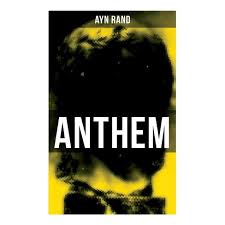PART 3
byPart 3 begins as Equality 7–2521 documents a shift that will forever mark his separation from the world he once accepted. His fascination begins not with rebellion, but with honest curiosity—an observation so small that others might have missed it: a frog’s leg twitched when touched by metal. That single movement triggers a cascade of questions he cannot ignore. Forbidden to ask, but driven to learn, he begins testing materials, mixing copper with zinc in brine, and watching patterns emerge. The spark, faint but real, proves the presence of something invisible yet powerful. This is no trick of nature; it is electricity, discovered not in labs or by councils, but by one man alone in a forgotten tunnel. The world above may not know it yet, but something has changed forever.
His experiment grows with each passing day. He draws wire and creates circuits, learning to harness the energy that once remained locked away by ignorance. This is not magic or chance—it is knowledge earned through trial, failure, and perseverance. He watches as the needle moves, as metal glows, and feels a triumph that no one else could understand. The device responds to his will, proof that truth can be uncovered without permission. He has created something new, something forbidden. The implications stretch far beyond the light in his tunnel—they challenge the foundations of a world that demands obedience over understanding. For the first time, he does not feel shame in his learning. He feels proud.
While the Council of Scholars insists that no truth exists outside collective agreement, Equality 7–2521 discovers that reality does not wait for approval. Nature answers to observation, not to authority. The twitching frog’s leg and glowing wires are not illusions but signs of a deeper world he is beginning to touch. His compass turns differently now, as if guided by new laws that defy what others blindly accept. That shift is more than mechanical; it reflects a moral and intellectual reorientation. He no longer trusts the voices that say learning must be granted. He sees that truth can be earned—and must be, if it is to mean anything. For a mind like his, obedience is no longer a virtue.
The very space in which he works becomes sacred. Though the tunnel is narrow, it offers more room to grow than any council hall above. In its silence, he thinks freely. Here, he is not one of many. He is alone—and for the first time, that solitude is not punishment but liberation. The discoveries he makes are his own, untouched by permission or committee. Each success deepens his resolve. He sees now what others have forgotten: that human beings were meant to ask, to challenge, and to know. These are not acts of rebellion. They are the duties of a mind awake.
Even as he labors in secret, Equality 7–2521 does not feel guilt. The fear imposed by his society fades in the glow of his invention. His work, though hidden, feels honest in a way his assigned duties never did. He understands that to bring light into darkness is an act of purpose. The choice to keep building, to keep learning, is not only about discovery—it is about becoming someone worthy of truth. Every result, every glow, every lesson proves he is more than what society declared him to be. He is a thinker, a doer, a man. And though he cannot yet say it, he begins to feel the shape of the word “I.”
This chapter marks more than a scientific breakthrough; it marks the beginning of a philosophical one. To know is to live differently. The moment he sees light born from his own design, Equality 7–2521 begins to live by a new standard—one that values reason, self-trust, and the courage to seek. The chapter leaves readers with a sense of rising momentum, the sense that ideas once hidden cannot stay buried. What starts as a private moment in a tunnel promises to spark a confrontation with the world above. The light he’s created may be small now, but it has the power to burn away centuries of imposed darkness.

